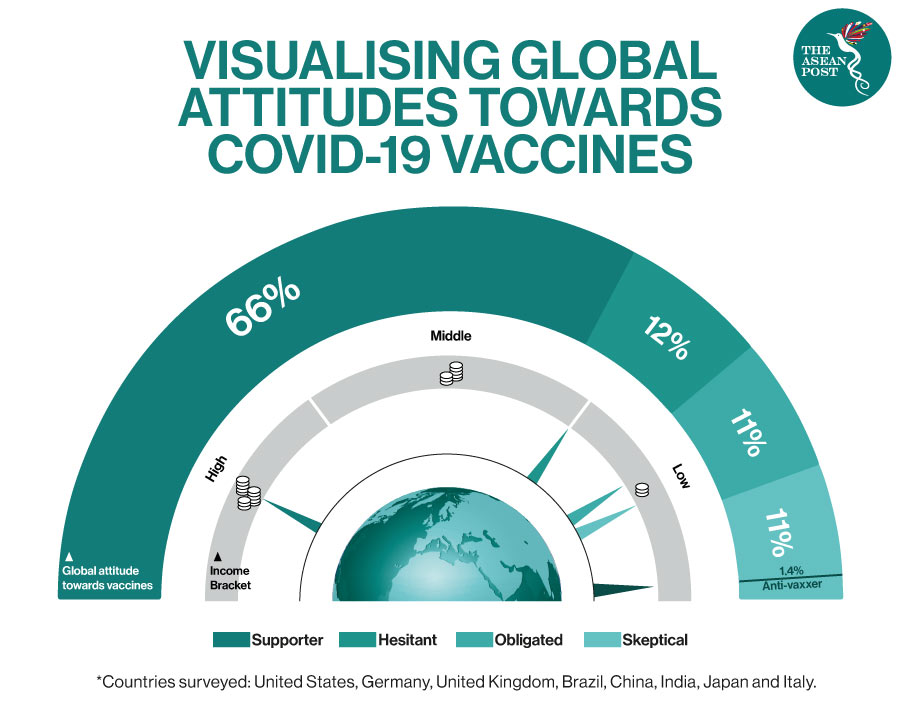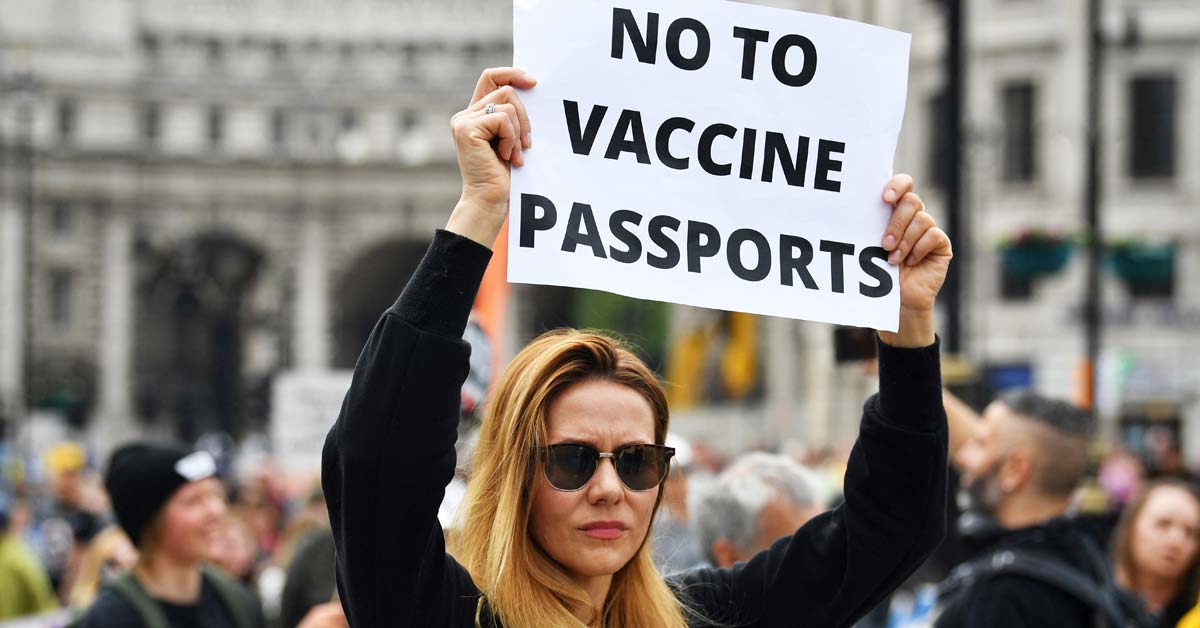We live in a world where everyone has an opinion, which can be instantly shared with millions of people across the world via social media. This can be a good thing when getting factual information out: We have seen how important it is to share personal stories from those living in areas of conflict so people can have an insider’s view of what it is like on the ground. Most recently, this has shone an important light on the plight of women in Afghanistan. However, at the same time, social media can be used to spread stories that contain inaccuracies and in the case of the COVID-19 vaccines, misinformation.
Vaccines have never been as divisive a topic as they are today.
Being vital medicines, vaccines have saved the lives of millions of people around the world since their inception and have been responsible for the eradication of diseases such as smallpox and a massive reduction in the incidence of polio.
The relatively new mRNA technology that is being used in some of the COVID-19 vaccines is now being researched in the hope it might help end other diseases like malaria. The Pfizer and Moderna vaccines are classed as mRNA vaccines, they contain a piece of genetic material that carries instructions on how to make a protein that resembles the “spike protein” on the outer surface of the coronavirus. The cells with the mRNA message make “spike proteins” and display them on their outer surface, our immune systems recognise these as foreign and prepare a short and long-term immune response. Once it has passed on its instructions, our cells break down the mRNA in a matter of days and it ceases to exist.
There has always been a minority of people who have been opposed to vaccines but the COVID-19 vaccines seem to have encouraged these people to move from the fringes of society to mainstream platforms and where before they were being ridiculed for their stance on vaccines, they are now being applauded and their voices amplified even by people who have previously been happy to take vaccines. And of course, there are those who believe the entire pandemic is a hoax and part of some wider sinister plan to reset the world order and somehow control entire populations.
This has of course angered those who have suffered first-hand as a result of the coronavirus, the healthcare workers who have been working tirelessly to care for the sick and the scientists who have escalated their efforts to come up with potential treatments and cures.
Many countries have seen public demonstrations against lockdowns and social distancing measures, as well as rallies against the use of vaccinations. Some have even seen healthcare facilities where COVID patients are being treated or where vaccines are being administered, vandalised and in some of the worst cases, healthcare professionals being abused and threatened.
But how did we get to this stage?

In the initial stages of the pandemic, people seemed to come together. There was a feeling of unity against an invisible virus that posed a credible threat to us all. People were supportive of healthcare workers and some countries even saw organised “claps” for those risking their lives working on the frontline.
When those who were vulnerable were asked to shield and stay at home, communities came together to arrange and deliver food parcels so that they wouldn’t go without food whilst keeping safe. People seemed to understand the need for lockdowns and social distancing as offices shut down and workers were asked to stay at home. But as time went on, different groups of people had differing experiences of the pandemic. Generally, adults fell into three camps:
1. Those who were directly affected by the illness that COVID brought, including those working on the front line.
2. Those who were affected by only the economic consequences of the pandemic.
3. Those who feel they are largely unaffected by the pandemic - people who ignored advice or lived in such a way the restrictions did not affect them.
This divide caused conflict. Those who were suffering economically could not balance the need for lockdowns against the large-scale financial devastation being caused by these restrictions, and those who were experiencing the real-life horrors on the front line could think of no other way to stop the deluge of sick patients presenting at hospitals. Children also suffered as school closures had a detrimental effect on education and they no longer had the opportunities for social interactions that they depend on for development, and this overwhelmed and stressed many parents.
The pandemic also divided people along socioeconomic and racial lines. It became apparent early on that those who were living in poorer socioeconomic areas were most likely to become sick from the virus. A chronic lack of investment in these communities forced them to live in overcrowded housing. Combined with an already increased risk of other health conditions due to poverty, this put them at higher risk of dying from the virus.
It was the same for those from minority backgrounds. They too were more likely to live in poorer neighbourhoods, work in jobs they could not do from home and many also had pre-existing health conditions that increased their risk of getting seriously sick from the virus.
As time went on, the economic damage deepened, and for those whose livelihoods were at risk, the idea of protecting the vulnerable at their expense began to wear thin. The goodwill offered to front-line workers also started to fade, with people voicing their opposition to how healthcare workers were being lauded in public forums; they began to see them as a symbol of lockdowns and restrictions.
Then came the vaccines.
Initially, the reception was positive. We finally had a tool that could potentially herald the beginning of the end of the pandemic. People were hopeful. But anti-vaxxers soon jumped online and began to spread misinformation about them in an attempt to thwart the vaccination effort.
It did not help that the early messaging about the vaccines was unclear, although it later changed as more evidence emerged, including information around their safety during pregnancy and whether or not they could be given to women trying to conceive. It is now clear that on balance, it is safer for pregnant women to take the vaccines than risk getting COVID and also that the vaccines have no effect on fertility. Despite this, misinformation about the vaccines causing infertility persists.
People who are against the vaccines have been especially vocal, and anti-vaxxers have seen their support and numbers grow. This appears to have worsened as governments start to vaccinate younger age groups. A recent rally in London saw people opposed to the vaccination of children bombarding healthcare professionals with neo-Nazi slurs and telling them they were going to be hanged like the doctors and nurses in the Nuremberg trials. This caused immense distress amongst healthcare professionals who have been risking their own lives looking after others throughout the pandemic.
We must not ignore the part that news outlets have played in encouraging this divide throughout the pandemic. News channels now tend to rely on clickbait online articles and heated television debates to reel viewers in. This has meant more and more controversial voices have been given platforms on major media outlets, both on television and in print, for the simple reason that they benefit news corporations.
They may dress it up as presenting “both sides of an argument”, but when one side is not based on evidence and relies only on the opinion of an unqualified individual, they are only serving to spread further misinformation. These heated debates and opinion pieces have sowed the seeds of doubt in many people’s minds when it comes to the vaccines, potentially leading to the deaths of some of those who got COVID after choosing not to get vaccinated because they were influenced by the misinformation they saw online or on television.
There is no doubt that the pandemic has divided us in more ways than one. It will take time to heal and will require leadership from those in charge. There are individuals, big organisations and even whole countries who stand to benefit by deepening these divides. Whether or not they will succeed remains to be seen, but this doctor feels there is more to be gained from coming together than being pulled further apart. - Al-Jazeera
